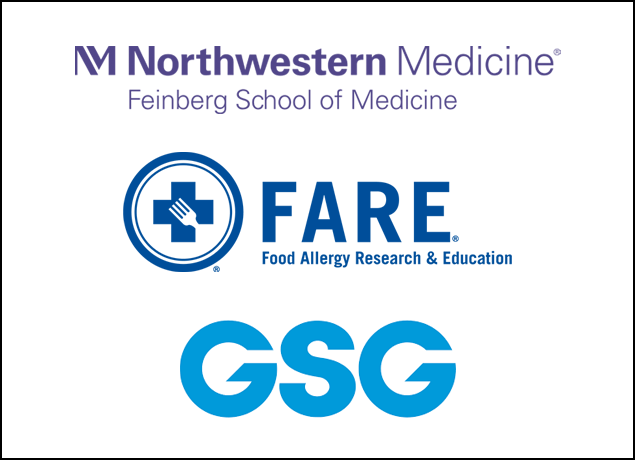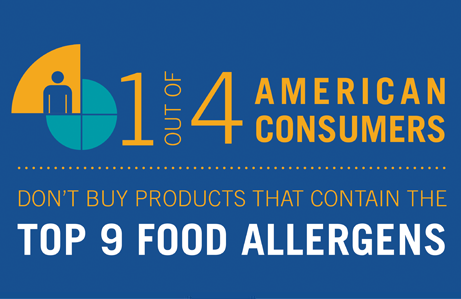A two year study to define the Food Allergy Consumer journey
avoid purchasing top 9 allergens because of their, or someone in their household’s, allergy or food intolerance.
Food Allergy Consumers have grown 4% per year for the past 20 years.
spent annually by 85 million Americans who avoid these proteins or allergens.
One in Four Americans Avoid Purchasing Food with the Top 9 Allergens
New research shows that while 32 million Americans are currently living with potentially life-threatening food allergies, the halo effect extends to nearly triple that number with more than 85 million Americans – or one-in-four Americans – are impacted by the disease.

Insights from Three Distinct Research Projects
This is a three-part project that combines Precautionary Allergen Labeling (PAL) research conducted through Northwestern University, FARE research conducted by McKinsey & Company outlining the market potential and qualitative research prepared by Global Strategy Group examining consumer habits of diverse populations.


Food Allergy Consumer Journey Study Key Facts
View the infographic of the key findings from the study
Unique Purchase Behaviors Drive $19 Billion in Buying Power
This new research found that Food Allergy Consumers represent $19 billion in potential sales and showcased their unique purchasing priorities and behaviors.
Safety Comes First, but Taste is Crucial
A Food Allergy Consumer or parent's purchase decisions are driven first and foremost by health and safety, but taste is crucial.
Dedicated Shoppers
71% spend 3-5 minutes reading the label of every single food they buy and they regularly have to visit multiple stores to fulfill their families needs.
Premium Buyers
Food Allergy Consumers spend 5% more on groceries – either because they are premium buyers or out of necessity.
“Back at the beginning, I sold a lot of my belongings along with receiving food stamps and WIC just to afford food, as you can’t use food banks when you have allergies. They think it's a luxury. For us, it’s life.”
- Food Allergy Mom
Parents Make Sacrifices to Afford Food and Care for Their Children
Currently, nearly 38 million Americans are living below the poverty line, more than 40 million Americans use food stamps, and low-income households managing food allergies spend 2.5 times more on emergency department and hospitalization costs than food allergy households with higher incomes.

A Universal Food Allergen Label is Needed
More than half (53%) of America’s Food Allergy Consumers indicate current labels are problematic and 71% say they spend time reading the labels of every single food item they purchase. Improving Precautionary Allergen Labels (PALs) will significantly improve the lives of these families.

"They need to make it easy to read and notice. We don’t want to spend 10 minutes searching a label to see if it is safe or not."
- Food Allergy Dad
Download the Full Food Allergy Consumer Journey Study Here
Download
Make your voice heard with food allergy studies like this one
Join the FARE Patient Registry® to help improve life with food allergies.


